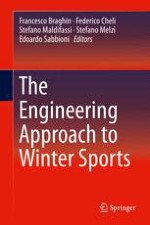2016 | OriginalPaper | Buchkapitel
7. Bobsleigh and Skeleton
verfasst von : Edoardo Sabbioni, Stefano Melzi, Federico Cheli, Francesco Braghin
Erschienen in: The Engineering Approach to Winter Sports
Verlag: Springer New York
Aktivieren Sie unsere intelligente Suche, um passende Fachinhalte oder Patente zu finden.
Wählen Sie Textabschnitte aus um mit Künstlicher Intelligenz passenden Patente zu finden. powered by
Markieren Sie Textabschnitte, um KI-gestützt weitere passende Inhalte zu finden. powered by
